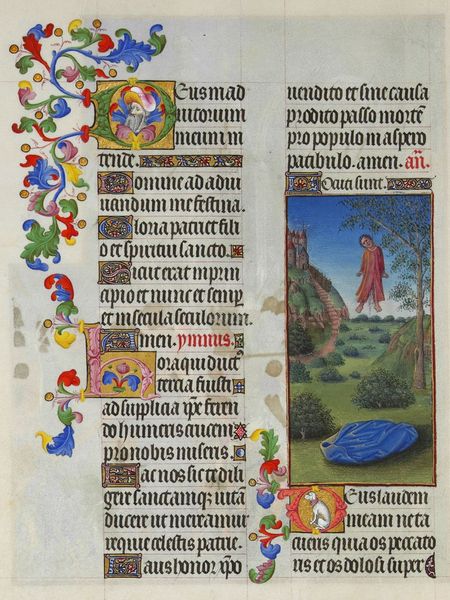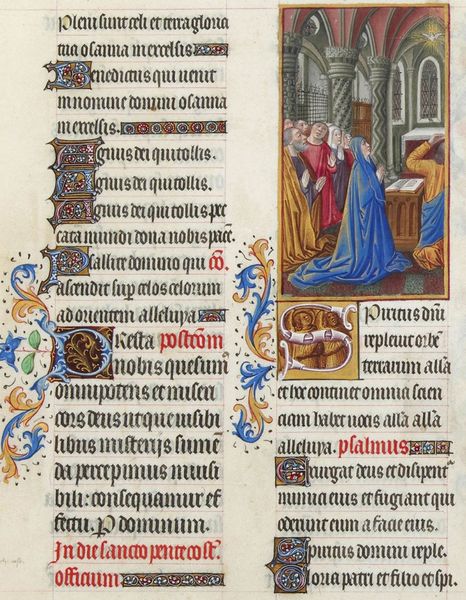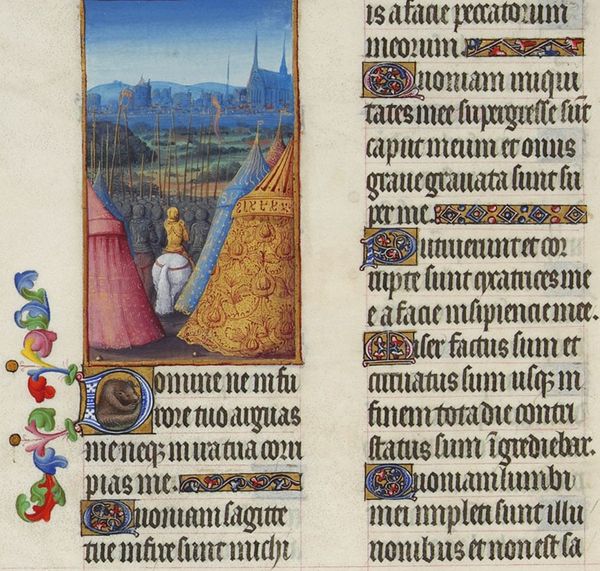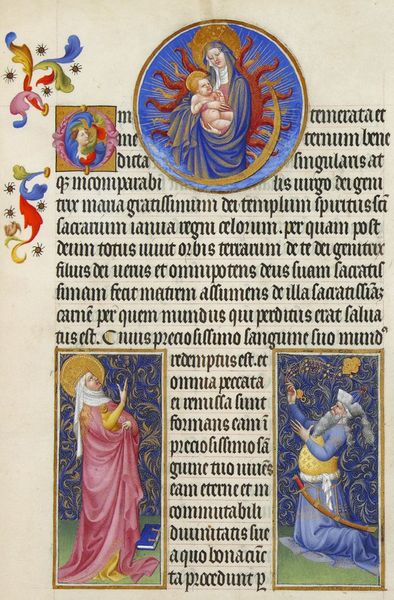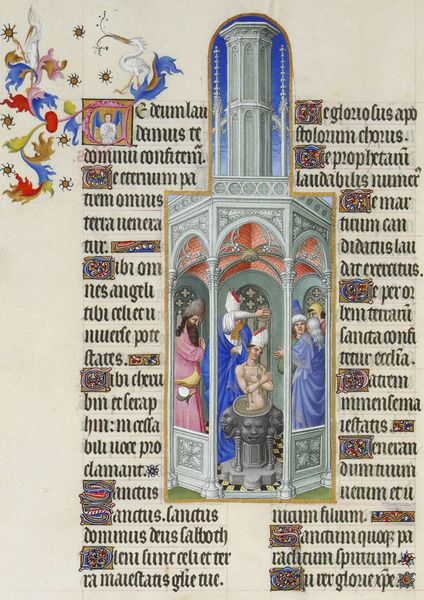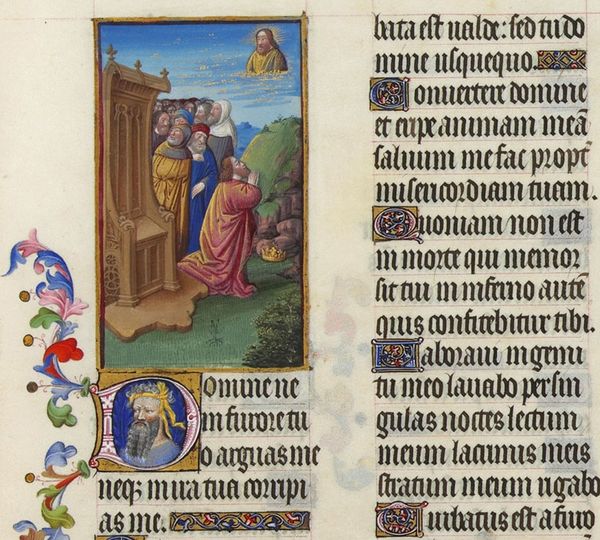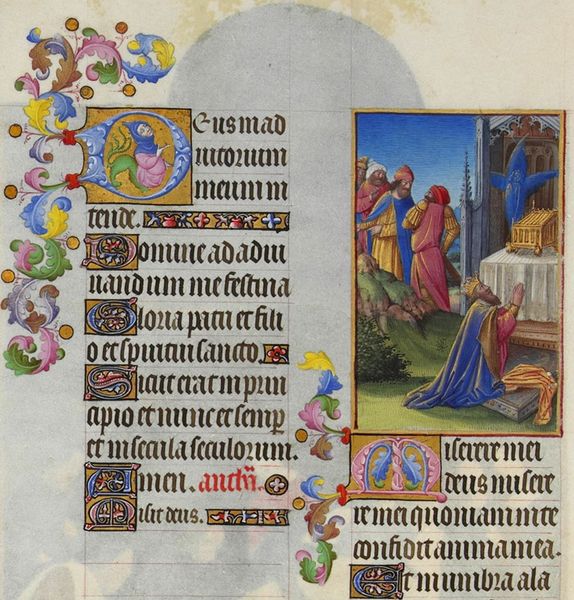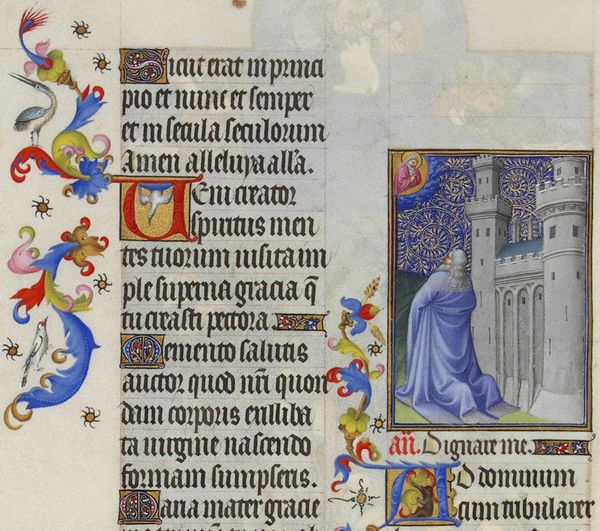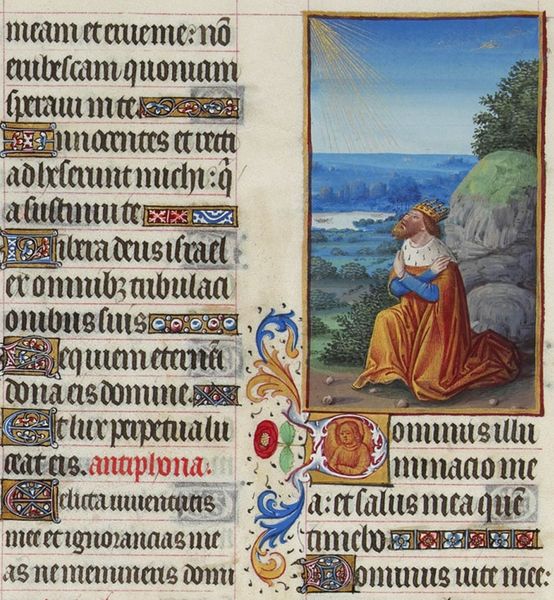
tempera
#
medieval
#
hand-lettering
#
tempera
#
landscape
#
hand lettering
#
holy-places
#
figuration
#
text
#
line
#
history-painting
#
international-gothic
#
miniature
#
calligraphy
Copyright: Public domain
Curator: Here we see “The Prayer of David," a miniature believed to be by the Limbourg brothers, famed for their work in illuminated manuscripts, part of the International Gothic movement. The scene depicts David kneeling in prayer outside a tower, his figure juxtaposed against the richly ornamented text. Editor: My immediate impression is of confinement contrasting with boundless faith. David's earthly imprisonment seems countered by his direct line to the divine, highlighted by the luminous angel descending from the upper right corner. It speaks to resilience and seeking solace even when physically constrained. Curator: Precisely! And understanding the historical context heightens that effect. Courtly art during the late Middle Ages often portrayed royalty in settings emphasizing their virtues, particularly piety. Here, even imprisoned, David’s prayer underscores his righteousness as king, reinforcing ideals of just rule through religious devotion. The inclusion of Latin script emphasizes the importance of written texts for the elite and educated during that period. Editor: Absolutely. And viewed through a more contemporary lens, this juxtaposition resonates with present-day dialogues around incarceration. David's position reminds us of today's incarcerated individuals, disproportionately people of color and those from marginalized communities. Even when robbed of physical freedom, inner conviction and spiritual expression endure, acting as defiance. The tower, then, can be interpreted not just as a medieval prison, but as any system of oppression limiting human potential. Curator: I appreciate that expanded viewpoint. Considering the landscape style, which emphasizes natural elements like trees and a rolling hill into the scene, the surroundings soften the image, perhaps symbolizing hope amidst confinement or even a form of freedom David is seeking. Editor: Right, nature offers sanctuary but from an obstructed view—distant blue hills as prospects—contrasting sharply with harsh realities imposed upon those systematically oppressed. And the delicate calligraphy with such meticulous line work around it adds such dimension, really making one stop and notice. Curator: Thinking about patronage as well, these illuminated manuscripts were commissioned by the very wealthy—illustrating the privilege inherent in crafting even expressions of piety. It shows the layers present in art when viewed with context of how accessible it may or may not be for certain audiences. Editor: Precisely! In looking at "The Prayer of David," we discover both timeless faith alongside uncomfortable echoes in spaces still marked, centuries later, by inequality and inequity. Art as a form of historical record and present-day action.
Comments
No comments
Be the first to comment and join the conversation on the ultimate creative platform.


